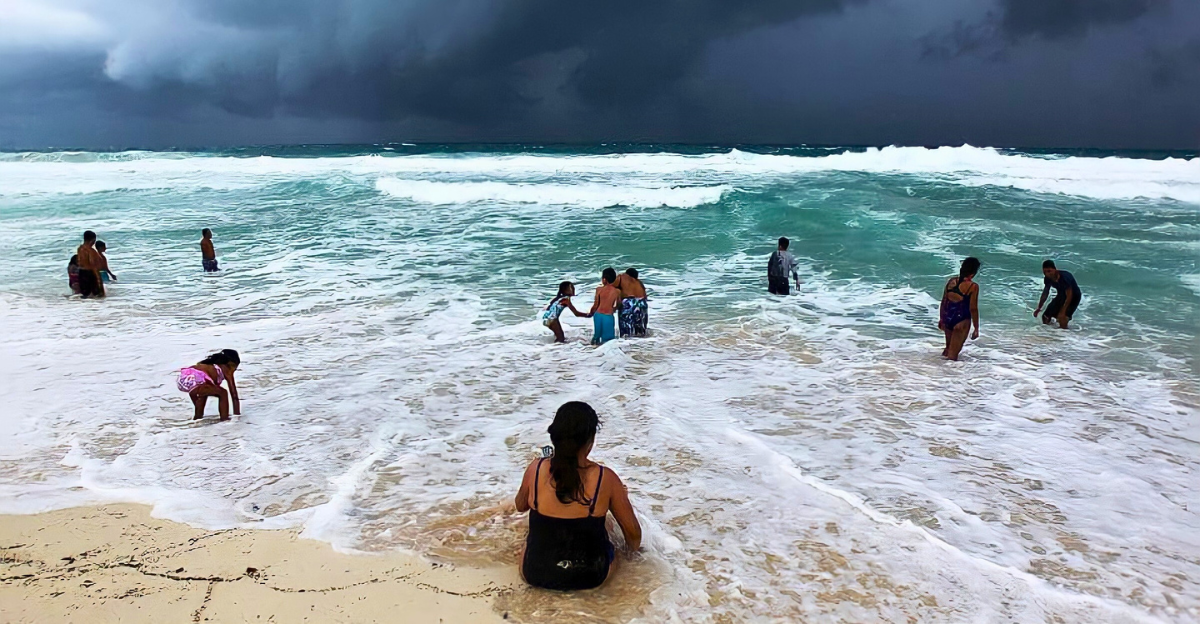
National Weather Service offices from Jacksonville down to Palm Beach urged people to avoid swimming over the Sept 13-14 weekend. Powerful northeasterly winds and outgoing tides had churned the surf, prompting rip-current alerts across 10 coastal counties.
In total, NWS warned over one million residents and tourists to stay out of the ocean.
Most beaches flew red flags as 3–7-foot breakers rolled in. Forecasters emphasized that even on a sunny Labor Day, the water was treacherous due to those strong currents.
High Stakes
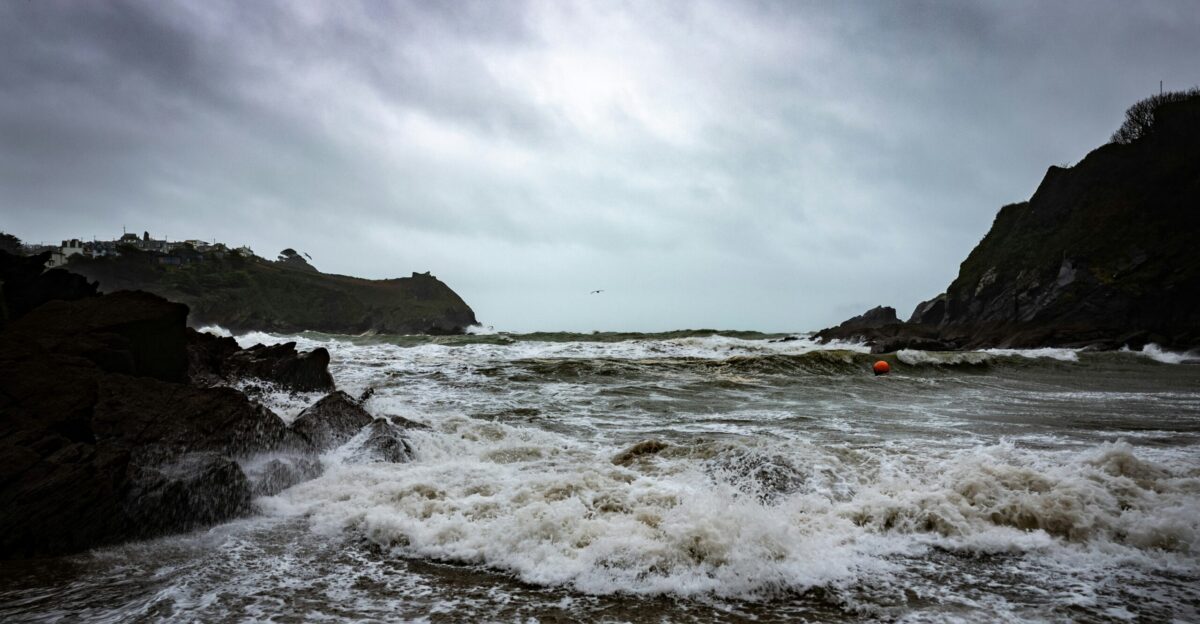
Rip currents are the deadliest ocean hazard. Lifeguard reports show about 80% of all beach rescues involve rip currents. As USLA’s Peter Davis warns, “Rip currents can be killers… the annual number of deaths due to rip currents… exceeds 100”.
These currents can race at 8 feet per second – faster than an Olympic swimmer – meaning even strong swimmers can be pulled offshore before they realize it.
Swimming outside flagged zones can be far more dangerous than many people imagine.
Population Pressure

Florida’s beaches serve a huge population. NOAA notes that about 16.2 million people live in the state’s coastal counties.
Palm Beach County alone has roughly 1.6 million residents. Add in tourism – an estimated 143 million visitors came to Florida in 2024 – and beaches are packed year-round.
Surveys show that beach/waterfront recreation is the top activity (about 34% of visitors). In other words, millions of people are in the water each year, vastly increasing exposure to rip-current danger.
Rising Exposure
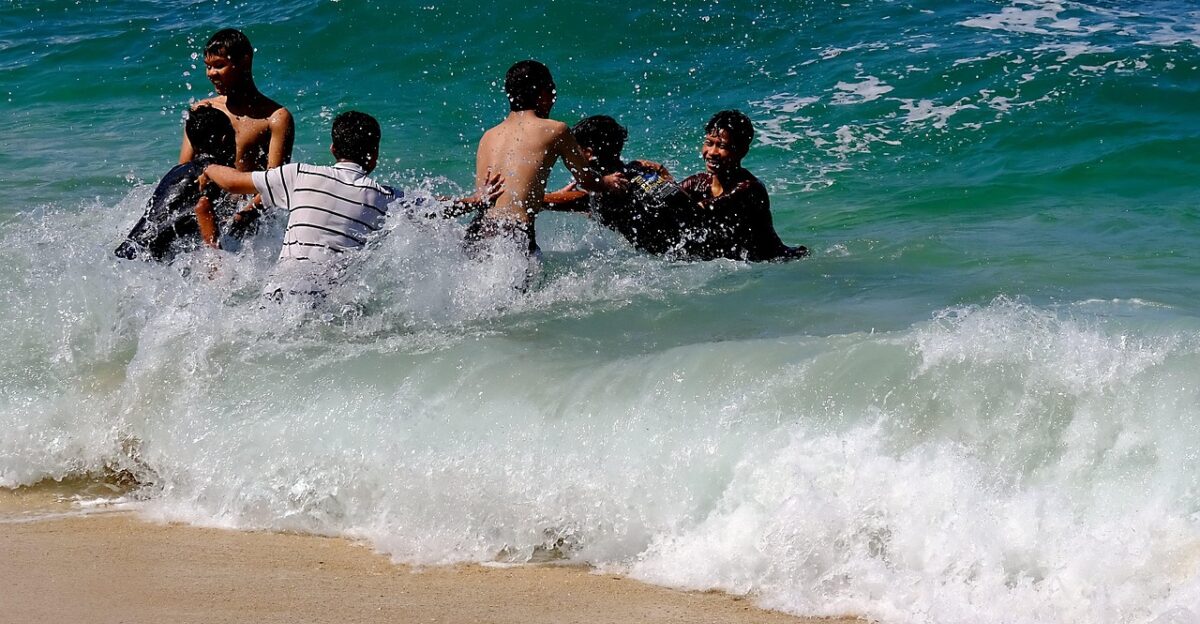
The sheer number of beach visits has skyrocketed. Studies estimate Florida residents made about 740 million beach trips by 2019 – up from ~500 million a decade earlier. Florida’s 825 miles of sandy coastline (out of 1,350 miles total), attract more visitors than many other U.S. destinations combined.
For context, U.S. national parks saw roughly 327 million visits in 2019, far below the 1.17 billion beach visits Florida generated that year.
Simply put, Florida’s beaches handle enormous crowds, and every extra swimmer means more people at risk when rip currents are active.
Calm Seas, Hidden Danger

It turned out that nothing mystical was causing the chaos – it was just weather, not a hidden storm. In fact, the Atlantic Basin was unusually quiet in mid-September 2025. NWS Jacksonville meteorologist Will Corless noted to Newsweek that although no tropical storms were present, “strong onshore winds are causing the rough surf”.
In Sarasota, Chief Lifeguard Rick Hinkson observed, “We didn’t have any really major rough surf… but a nasty squall line blew through… and that outgoing wind just kind of creates those rip currents”.
NOAA climatologists confirmed this lull was rare: as of Sept. 10, the basin had been storm-free for almost two weeks – the first such Sept. 10 with zero storms since 2016.
County Impact
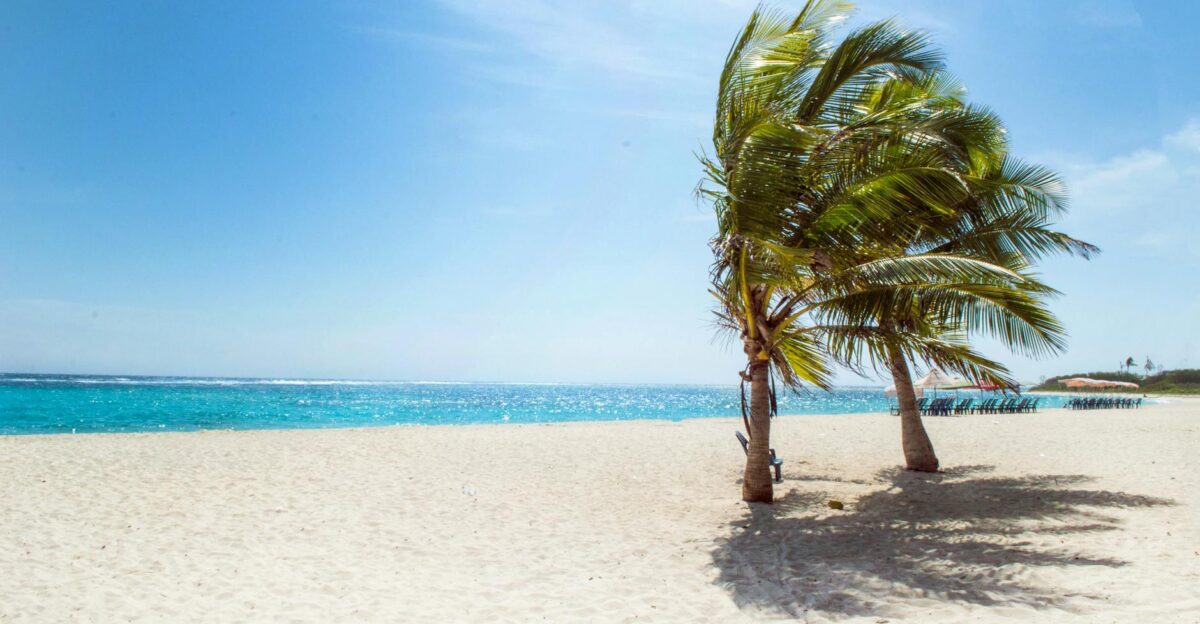
High-risk advisories covered 10 Florida counties from Nassau (northeast FL) down to Palm Beach (southeast). These include highly populated areas: Duval County (Jacksonville) ~1.06 million people, Volusia County ~612,000, Brevard County ~658,000, Martin County ~160,000, and Palm Beach ~1.60 million.
In practical terms, this meant millions of Floridians were effectively told to get out of the surf for two days.
Even mid-sized counties like St. Lucie and Flagler (not shown) got alerts. With so many warned households, officials emphasized that entering the water was strongly discouraged across much of the East Coast that weekend.
Lifeguard Reality
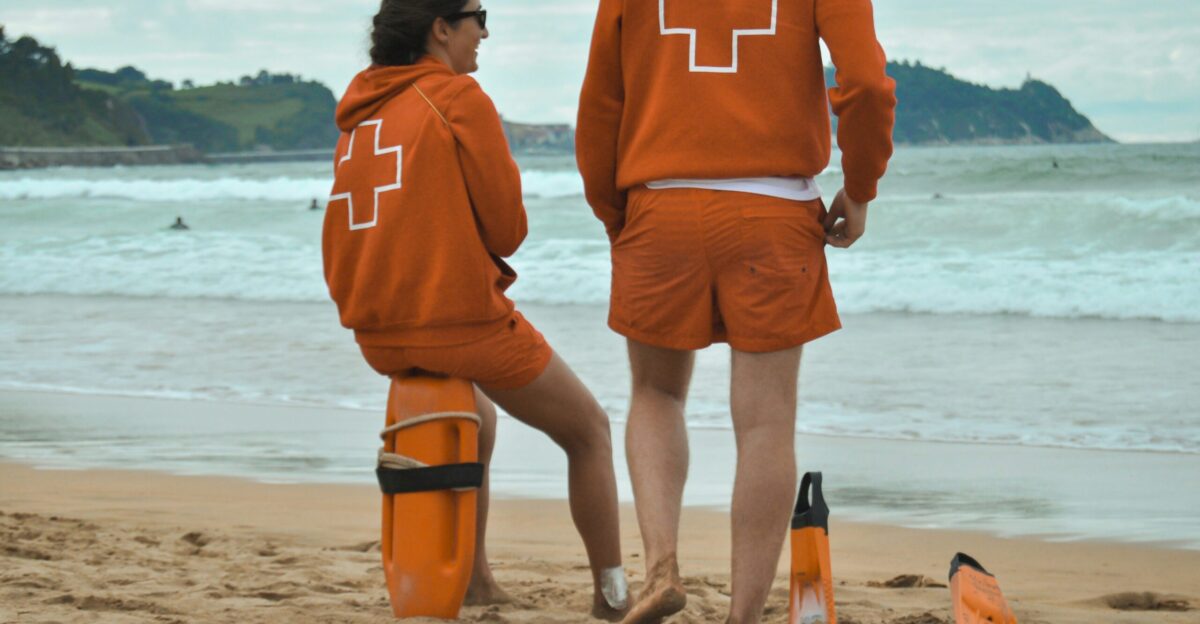
Lifeguards found the math of rescues daunting. “Rip currents can sweep even the best swimmers away from shore into deeper water,” one NWS statement bluntly warned.
Local crews lived that reality: every day they patrolled, someone was rescued. Off-duty Sarasota lifeguard Mariano Martinez, who helped save 9 swimmers during the hazardous surf, said simply, “I always have my rescue stuff, wherever I am, in my car”.
His remark underlines how all lifeguards expect emergencies. In Miami Beach, teams tallied 577 water rescues in 2024 (Fort Lauderdale had 196).
Forecast Technology

To predict these events, NOAA has built high-tech models. For example, in June 2024, NOAA launched the first national rip-current forecast model. This tool “predicts the hourly probability of rip currents along U.S. beaches up to six days out”, using inputs like wave height, wind, and tide from the Nearshore Wave Prediction System (NWPS).
These sophisticated probabilistic models yield daily beach forecasts. Forecasters can now issue rip warnings far in advance—up to 144 hours out—by analyzing shifting winds and bathymetry.
The idea is to treat rip currents almost like weather: forecastable and communicated well before swimmers arrive.
Silent Killer

Rip currents kill more swimmers in the U.S. than any other weather hazard. NOAA data shows “more than 800 people have died in rip current drownings since 2010”.
Florida consistently leads all states in these deaths. By mid-2025, Florida alone had nearly 30 rip-related fatalities on record. Nationwide, those annual drownings now exceed the combined toll of lightning, tornadoes, and inland flooding.
In fact, NOAA experts stress that rip currents cause around 100 U.S. deaths per year – a sobering total that underscores the phrase silent killer. The quiet strength of the surf means tragedy can strike on an otherwise beautiful day.
Seasonal Paradox
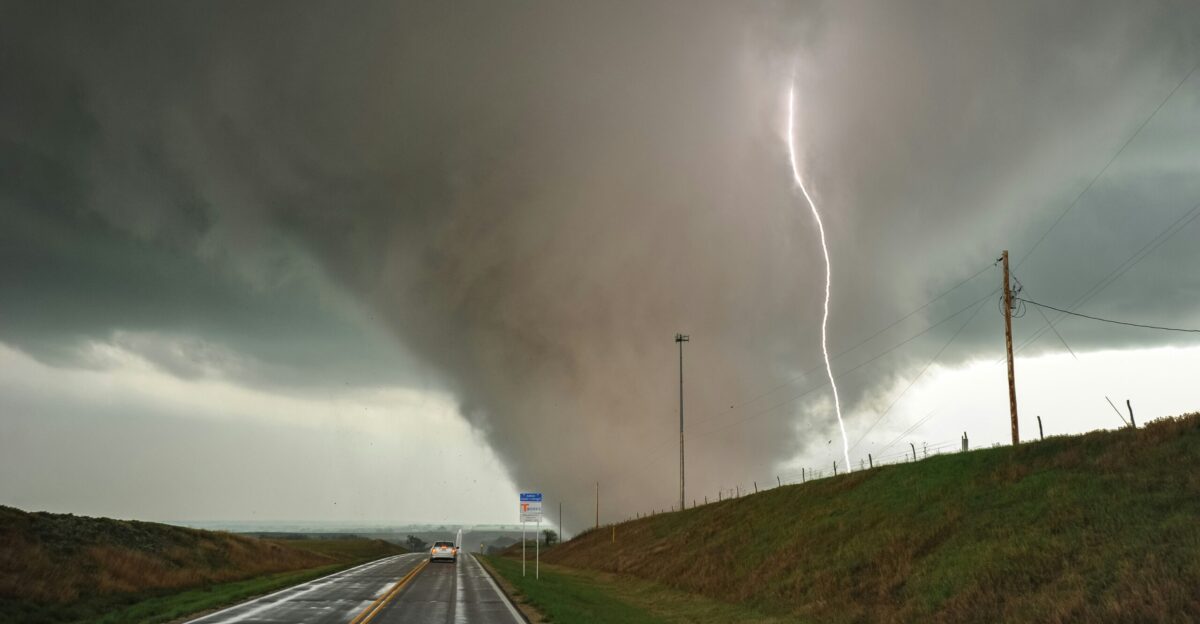
The most dangerous beach days often feel the safest. NOAA issues a clear warning: “Great beach weather does not always mean it’s safe… Rip currents often form on calm, sunny days”.
Even veteran forecasters agree. NHC Director Mike Brennan put it bluntly: “Weather conditions might look ideal for a beach trip, but dangerous rip currents can be hard to spot”.
Sunny skies and small waves lull swimmers into a false sense of security. Then an unseen current sweeps them out. The advice, again, is: respect the ocean flags and never assume calm seas are safe.
Rescue Strain

Florida’s growing population and booming tourism are stretching rescue resources thin. The state population is now ~23.4 million (as of 2024), and millions more tourists come each year.
Lifeguards report that roughly 80% of their ocean emergency calls involve rip currents, often during peak beach season.
Last year, Miami Beach lifeguards alone performed 577 rescues (Fort Lauderdale 196). Many teams say they’re understaffed: one veteran guard noted, “We’re a small force trying to cover all those miles of beach.” Agencies warn that without more personnel and funding, public safety could suffer as crowds grow.
Leadership Response

Florida’s leaders have so far emphasized tourism growth. Governor DeSantis celebrated a record 143 million visitors in 2024, cementing Florida’s “No. 1 vacation” brand. But those headline numbers have a flip side. Lifeguard officials point out that as attendance climbs, rescue tallies do too.
The same press releases that tout new visitors quietly coincide with reports of hundreds of rescues last season.
In response, some state lawmakers and safety advocates are calling for stepped-up water-safety funding. Proposals include requiring schools or community centers to teach basic rip-current awareness and swimming skills, arguing that a bit of education could save many lives.
Prevention Push

Local governments and nonprofits are stepping up outreach. For example, South African programs and New Zealand’s “Rip & River Aware” campaign combine education with practice. As Surf Life Saving NZ’s Adam Wooler emphasizes, “Rip currents are the most dangerous hazard swimmers face”, so their curriculum uses a pool-based simulator to teach kids how to escape a rip.
In that program, a mobile “rip simulator” lets students feel how currents pull them, then practice the roll-and-swim technique.
Florida counties are looking at similar tools: lifeguards now tour schools with mock-ups of rip currents and run community swim classes.
Expert Skepticism

Not everyone is convinced the current approach reaches everyone. Meteorologists and social scientists note that many beachgoers still don’t know what a rip looks like. NOAA cautions that rip currents “are often hard to identify in the surf and not everyone knows about the danger”.
Critics say outreach tends to peak in summer—yet Florida’s subtropical climate means nearly year-round beach use. They worry seasonal safety campaigns may lull people into thinking winter beaches are harmless.
Moreover, Florida’s diverse population (including non-English speakers) means some swimmers might miss warnings altogether.
Future Framework

Researchers are now aiming for hyper-local, high-tech rip alerts. NOAA’s new model is one step: it ingests real-time wave, wind, and tide data to forecast rip risk days in advance. Next-generation systems promise to go even further. For instance, researchers are exploring live beach monitoring via webcams and drones.
NOAA reports that using “webcam imagery and AI identification of rip currents is showing promise”.
Some think smartphones could soon receive on-the-spot alerts for specific beach segments (not just county-wide flags). Imagine an app pinging you: “Rip current hazard just increased on this pier. Use the beach next door instead.”
Policy Implications

State officials are considering whether to make water-safety education mandatory in schools. Florida law already requires public schools to provide parents with information on water safety and swimming lessons (effective 2022).
Now, legislators are debating the next step: proposals would mandate rip-current awareness or swim classes in high school curricula. Proponents cite research showing that basic training can dramatically cut drownings. (For example, one international study suggests well-delivered water safety lessons in youth can reduce accidental drownings by up to 40%.)
If adopted, Florida would join other coastal states that already give students in-depth water-safety education and even CPR certification, treating it as seriously as teaching them to drive safely.
International Patterns

Globally, other coastal regions offer lessons for Florida. Australia has long had one of the world’s lowest beach drowning rates after decades of public education. Australians grow up hearing “swim between the flags,” meaning: stay in zones patrolled by lifeguards.
By contrast, Florida’s open beaches lack that tradition, but officials are importing best practices. South Africa’s NSRI (National Sea Rescue Institute) also underscores public safety: they credit multi-language beach signs and volunteer rescue posts with cutting incidents.
Both countries emphasize prevention-first strategies: in training, signage, and law. Florida policymakers hope to adapt these models—ensuring every arriving tourist hears a safety message, not just a welcome one.
Legal Evolution

Rip currents are even reshaping law and liability. Attorneys say increasing numbers of beachgoers have sued municipalities and resorts after rip-accidents, alleging inadequate warnings. The legal argument: if a beach remains open, it must post clear, multilingual warnings and enforce bans vigorously.
Experts predict we’ll soon see stricter signage standards and disclosure rules. For example, some communities are considering mandatory safety briefings or swim waivers for tourists renting oceanfront homes.
The goal for lawyers is simple: if tragedy strikes, they want documented proof that visitors were properly warned.
Cultural Shift

Beachgoer habits are changing. Survey data show younger adults often skip looking at flags or talking to lifeguards—instead, they check apps and social media for surf reports. There are many beach-safety apps now, but dependence on gadgets has pitfalls: cell service can be unreliable at remote shores or during tropical storms.
That’s why safety planners advocate a hybrid approach. Lifeguards are testing push-notification systems that combine with the old flags. For example, some Gulf beaches use geofencing to send alerts like “Rip current warning in effect” to all phones on the beach.
Still, officials stress: apps should augment rather than replace visual signals.
Broader Reflection
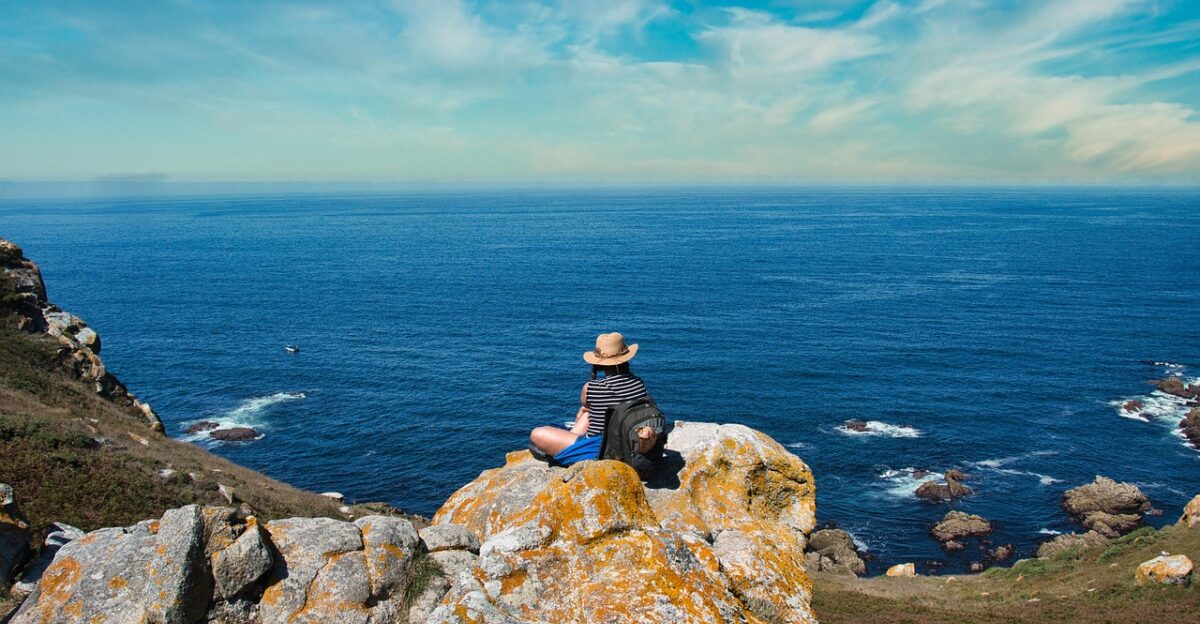
Florida’s rip-current warnings are a microcosm of a bigger challenge: managing one of the world’s busiest coastlines in an uncertain climate. The state boasts 825 miles of beaches, which fuel its tourism industry (record 143M visitors in 2024).
Yet those same shores are highly vulnerable to rising seas and stronger storms. As the Florida Climate Institute notes, higher sea levels and more frequent, powerful hurricanes “have the potential to severely impact” tourism infrastructure.
The pressure is clear: as millions more flock here, Florida must ask whether its lifeguards, education programs, and warning systems can keep pace.